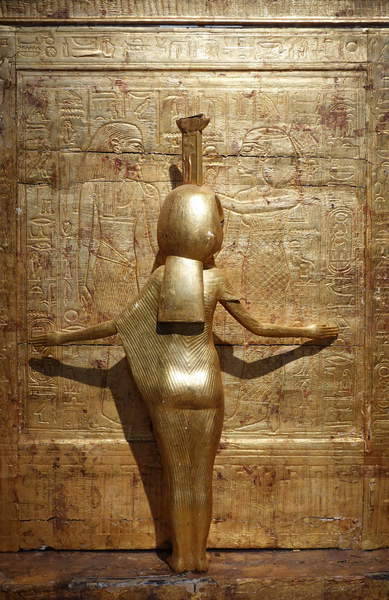
New Kingdom, late 18th Dynasty, c. 1333-1323 B.C.
Tomb of Tutankhamun, KV62.
Egyptian Museum, Cairo. JE 60686
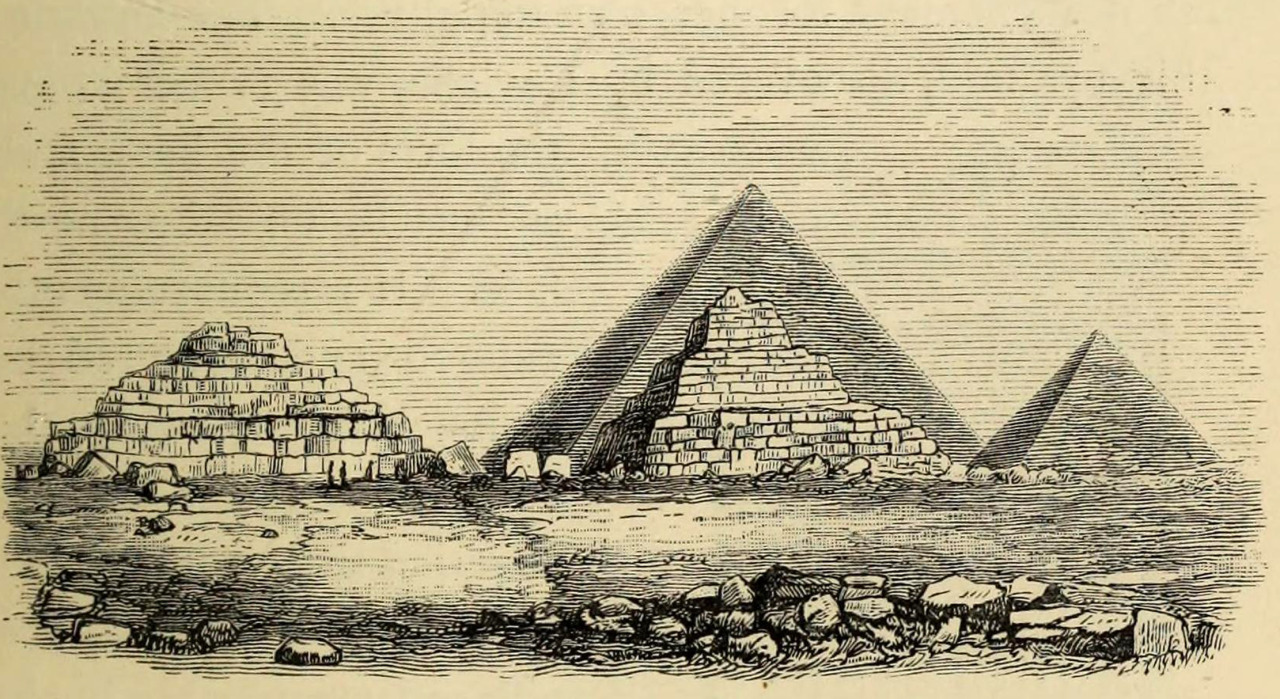
Source details and larger version.
Very good, up to a point: my collection of vintage pyramid imagery.
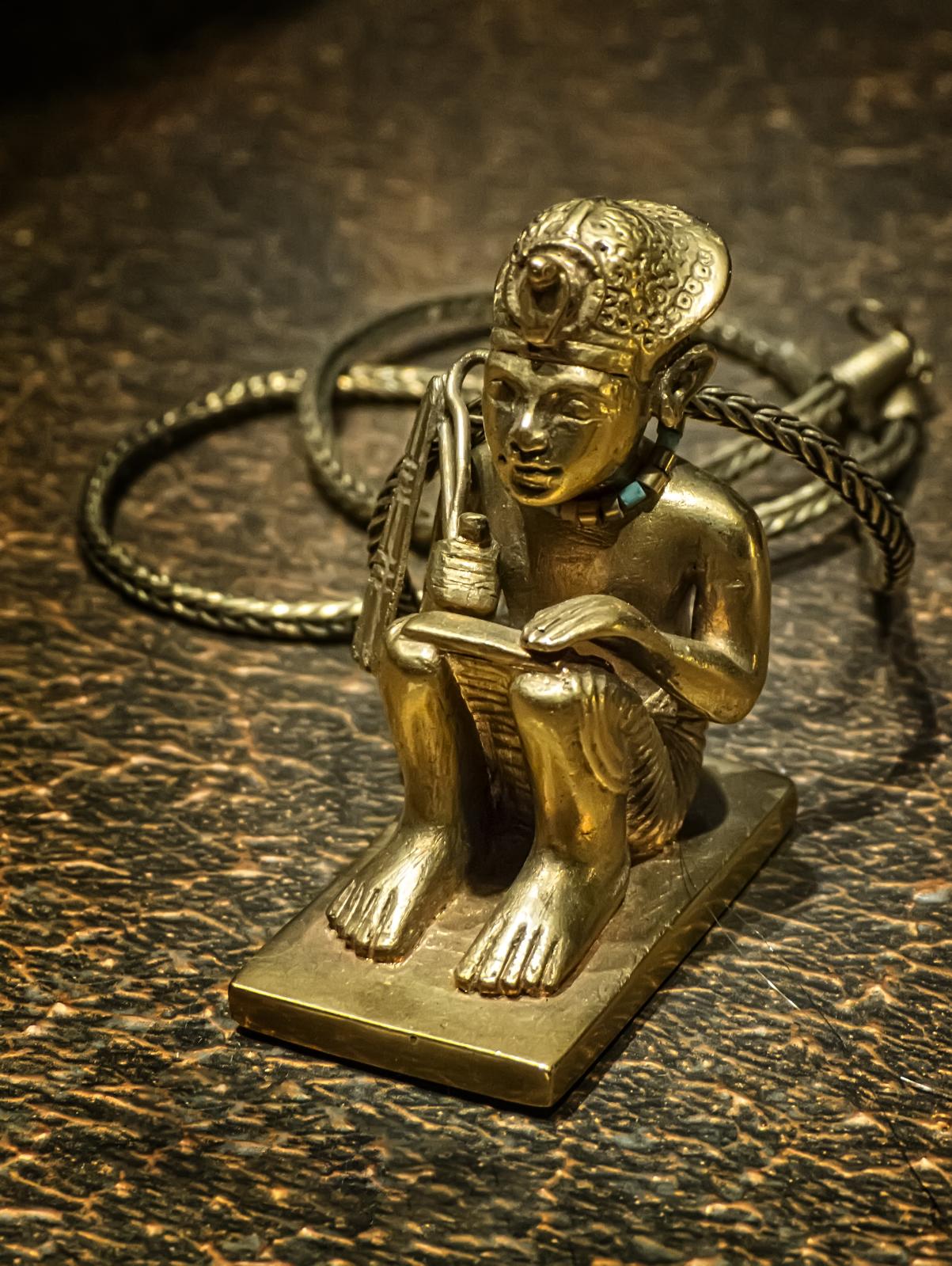
Necklace with pendant depicting a squatting King Tutankhamun wearing Khepresh crown
New Kingdom
18th Dynasty
Egypt 1332-1323 BCE
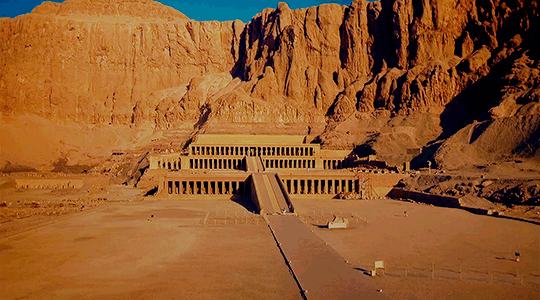
Mortuary temple of the female pharaoh Hatshepsut at Deir el-Bahari. EGYPT FROM ABOVE (2020) - Egypt's Ancient Empire (1.01)

Bronze figurines of the Egyptian and Roman deities Osiris and Bacchus that were discovered in eastern Poland last year, and which were initially believed to be from the 19th century, have now been dated back to ancient Egypt and Rome.
The heritage conservator for Lublin province has confirmed that the figure of Osiris is an original from the 1st millennium BC, while the depiction of Bacchus is from the 1st century AD.
The finds were made in May 2022 in the grounds of a stately home that belonged to the Kleniewski family, local landowners. That led to initial speculation that the figures were part of their interior decoration from when the home was built in the 19th century.
However, the unprecedented nature of the discovery meant there were always doubts about this theory and now experts from the National Museum in Lublin and the University of Warsaw’s archaeology department have confirmed that the objects are in fact originals from antiquity. Read More »
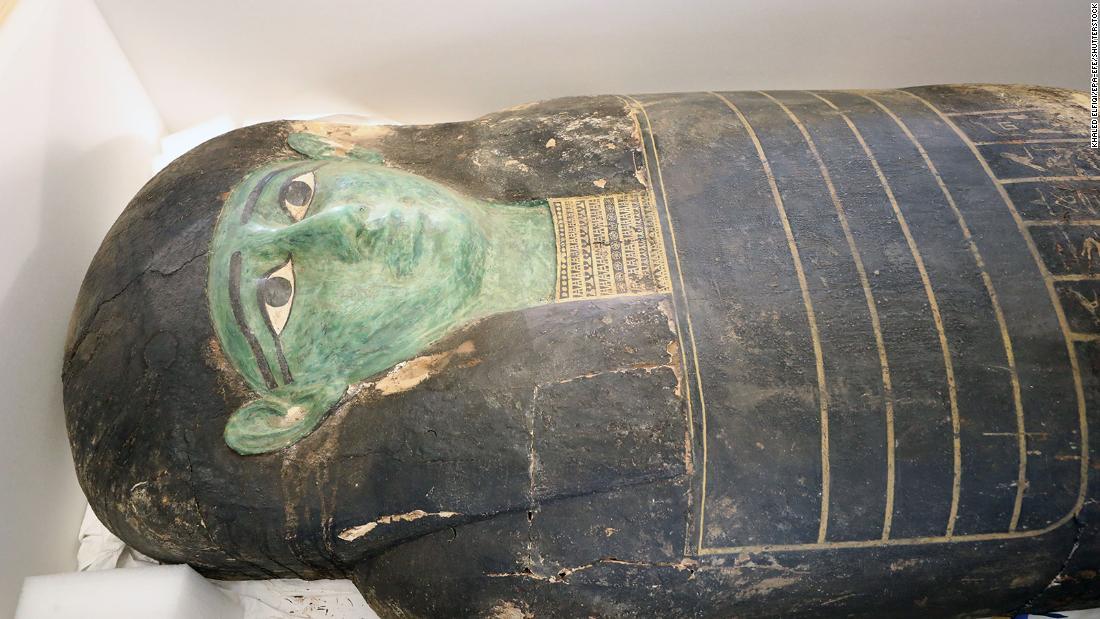
Egyptian authorities announced the recovery of a heavy sarcophagus lid from the United States on Monday at a ceremony in Cairo.
The sarcophagus, which at 500 kilograms (about 1,100 pounds) is one of the biggest, dates back to the Late Period of Ancient Egypt (747-332 BC), said Mostafa Waziri, the secretary-general of the Supreme Council of Antiquities at Egypt's Ministry of Tourism and Antiquities.
Ahmed Issa, Egypt's minister of tourism and antiquities, said the lid "was looted and smuggled from Egypt to the United States a few years ago."
The recovery came as a result of the collaboration with US authorities and an investigation spanning over two years, Issa added. ...